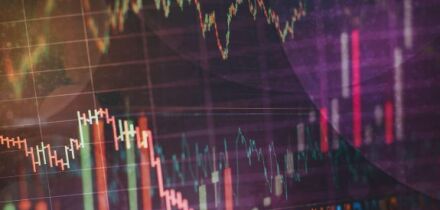
The Covid-19 pandemic wrought havoc in March, but Harmony French Home Loans 2020-1 showed that, done right, it’s possible to execute deals smoothly during the most difficult moments. Environmental, social and governance (ESG) transactions took hold in many asset classes during the year, and River Green Finance 2020 was the pioneer in European CMBS in January.
“It definitely needed some determination and vision,” says Alexandre Vigier, global head of financial and operating asset securitization at Crédit Agricole CIB, as he recalls pricing Harmony French Home Loans 2020-1 for Credit Immobilier de France Développement (CIFD) amid the market turmoil of early March 2020.
It was a brave issuer to come to market during a week that saw the first central bank responses to the rapidly escalating pandemic and that ended with US and European equity benchmarks suffering their worst trading day since Black Monday in 1987. But the deal was a great success.
The story starts in 2019 with CIFD, which has been in run-off mode since it stopped writing new business in 2013 and was refinancing maturing debt with government guaranteed bonds.

Crédit Agricole had several years earlier first pitched the idea of using the RMBS market to refinance the well-seasoned portfolio, given the attractive pricing and diversification benefits. The first public transaction emerged in November 2019, with Crédit Agricole as co-arranger and joint bookrunner, and was well-received by investors, in what was to be a regular programme of issuance.
Its second outing faced a much more difficult task and so the bookrunners played a thoughtful strategy. On March 4, when Europe was just waking up to the threat posed by Covid-19, the leads took the unusual decision – in the ABS market – to announce the mandate for the deal, and not the deal itself.
“It gave us time to engage with key accounts and see if we could get traction and whether there was a working market window,” says Franck Thevenon-Rousseau, co-head of financial institution securitization.
And while the outlook deteriorated over the following week, the move by the Bank of England on March 11 to start supporting markets opened up a window to announce the deal before any volatility caused by an expected European Central Bank announcement the following day.
The leads opened books with initial price thoughts at the 50bp area over Euribor and by mid-afternoon books exceeded the target size of €650m. It was at that point that the banks made their crucial move – one rarely, if ever, taken in the European ABS/RMBS market.
“Given the market background, we decided to make the leap and try to close the books on the same day,” he says. “The ABS market likes to take its time, it has credit work to do, and admin to process, so it was a challenge for investors but everyone was onboard.”
Pricing at 50bp over was only 15bp wider than the inaugural trade in a very different market while the issuer still got its target size.
“That it was a great success speaks to the strength of the collateral, 12 years seasoning and low LTV,” says Vigier. “It also helped that the issuer was consistent, bringing a tried-and-tested trade and had committed to come back to the market.”
For Crédit Agricole, the only bank to have a lead manager role on both of GlobalCapital’s RMBS and CMBS deals of year, Harmony was in keeping with its long-term approach. “While we’re not active in every asset class, we are focused on the asset classes that we know best and where we can add value,” he says.
European RMBS is clearly one such asset class – a product where Crédit Agricole is also an important issuer – while it is also very active in auto and consumer ABS. It is also pushing hard for more ESG securitizations.
River Green Finance 2020, the €186.39m deal backed by a single loan on River Ouest, a grade-A office building, is one example of that – the first green-marketed CMBS in Europe.
“Green is only at the start of its story in securitization but the trend is absolutely clear,” says Vigier. “Green issuances can attract more investors and/or larger tickets, but previously it was hard to say if they had any pricing impact. It is now becoming visible in the unsecured market with negative spread premium, a greenium, and I think that also showed in the River Green CMBS.”





